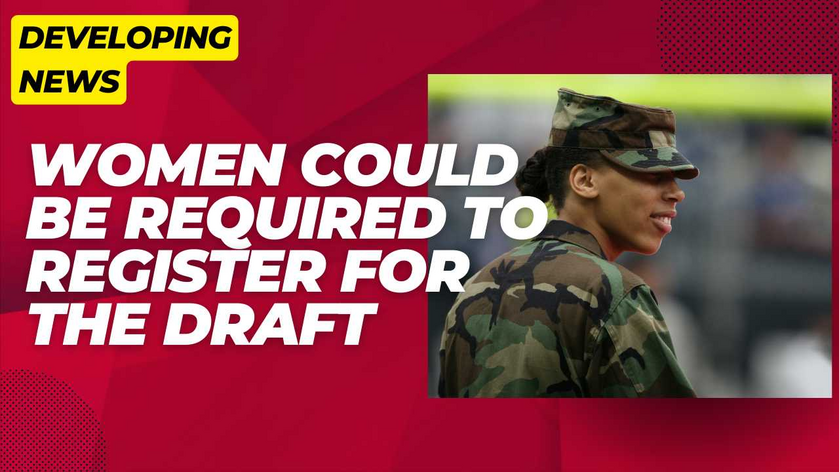H.R. 8070 will automatically register all draft-age male and female U.S. residents with the Selective Service System for a possible military draft, based on information from other Federal databases.
This new system of automatic draft registration would replace the existing system, in place since 1980, in which young men have the freedom to decide whether or not to sign up for the draft.
Congress has passed new automatic draft registration bill that would replace the existing system, in place since 1980, in which young men have the freedom to decide whether or not to sign up for the draft.
Men and women would now be required to register. This is the first time women have been included.
Specifically, the executive summary states:
Amends the Military Selective Service Act to require the registration of women for Selective Service.
This amendment signifies a significant policy change, ensuring that women, like men, would be required to register with the Selective Service System, potentially making them eligible for conscription should the need arise.
Historically, the Selective Service System in the United States has required only men to register. The requirement for men to register for the draft has been in place since 1940, although the draft itself has been inactive since 1973. Men aged 18 through 25 have been required to register within 30 days of their 18th birthday.
The proposed change in the NDAA for Fiscal Year 2025 represents a significant shift by including women in the mandatory registration process for the first time. Here are the key differences:
Previous Requirement:
Only Men: Historically, only men aged 18 through 25 were required to register for Selective Service.
Registration Age: Men had to register within 30 days of their 18th birthday.
Proposed Change:
Inclusion of Women: The amendment to the Military Selective Service Act would require women to register for Selective Service, making the registration mandatory for both men and women.
Equal Requirement: Both men and women aged 18 through 25 would be required to register within the same timeframe.
The bill was approved in the House with a vote of 217 to 199. Among the votes, 211 Republicans supported the measure, while Marjorie Taylor Greene (GA), Thomas Massie (KY), and Matt Rosendale (MT) voted no.
196 Democrats voted against the bill, with 6 breaking ranks to vote in favor. The legislation now advances to the Senate for further deliberation.
I walked away from the mainstream media to give you stories like this you aren’t seeing in the mainstream media. Become a paid subscriber for $5 a month if you haven’t already. You can quit anytime.
The proposed changes to the Military Selective Service Act, including the requirement for women to register for Selective Service, need to go through the legislative process, which involves consideration and approval by both the Senate and the House of Representatives.
Committee Approval: The Senate Armed Services Committee has voted to advance the NDAA for Fiscal Year 2025, which includes the proposed changes.
Senate Floor Consideration: The bill will now be debated and voted on by the full U.S. Senate.
House of Representatives: A separate version of the NDAA will go through the House of Representatives. The House must also debate and vote on its version of the bill.
Conference Committee: If there are differences between the Senate and House versions of the bill, a bicameral conference committee will be formed to reconcile these differences and create a final version.
Final Approval: The reconciled bill must then be approved by both the Senate and the House of Representatives.
Presidential Signature: Once both chambers of Congress pass the final version of the bill, it is sent to the President for signing into law.
Therefore, the proposed change requiring women to register for Selective Service, like all other provisions in the NDAA, will undergo thorough scrutiny and multiple stages of approval before becoming law.





















